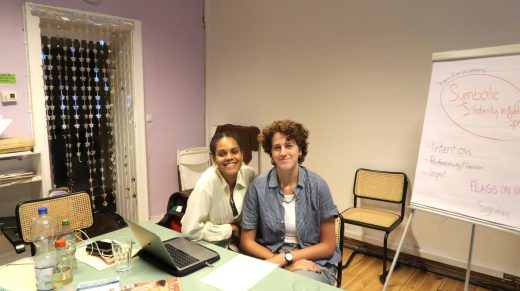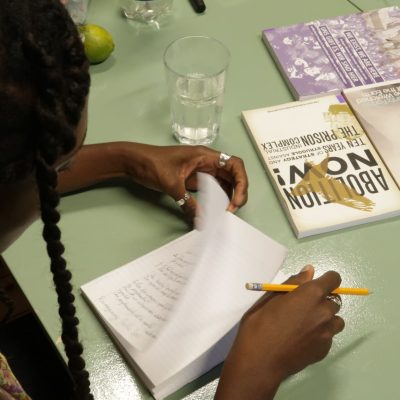Article
“Multiple Paths to a Future: Can Flags Connect?” investigates how symbols—especially flags—can shape narratives of belonging and exclusion. In a time of rising nationalism and right-wing discourse in Germany, where symbols are increasingly used to reinforce narrow definitions of identity, we ask: How can flags and symbols contribute to building a more inclusive future, where there is room for diverse voices and shared stories?
According to Eli and Mari, in periods of growing fascism, symbolic solidarity is essential because it proclaims opposition, fights erasure, and keeps struggles in the public eye. They describe how “authoritarian and oppressive regimes try to control narratives by removing visual representations of opposition, as seen by the repression of Palestinian solidarity symbols.” Therefore, in such circumstances, wearing a pin, waving a flag, or using symbols to mark public spaces becomes much more than just a recognition signal; it becomes an act of resistance against attempts to normalize oppression. Furthermore, Eli and Mari describe how these symbols, used in everyday life, push conversations beyond social media and into the streets, making sure that it is visible for everyone to see. In discussions about different forms of solidarity, symbolic solidarity is often depicted at the bottom of the hierarchy, readily dismissed as performative.
Project Development
Eli and Mari wrote a literature analysis on the topic and decided to interview ten people who are working on the subject. They filmed the conversations and created a short documentary. After this process, they developed their workshop on symbolic solidarity, where their documentary was shared and a discussion was hosted.

The Symbolic Solidarity in Public Spaces Workshop taking place in July in Berlin.




